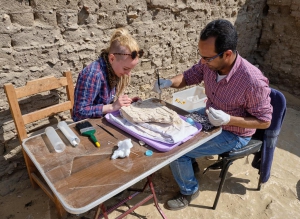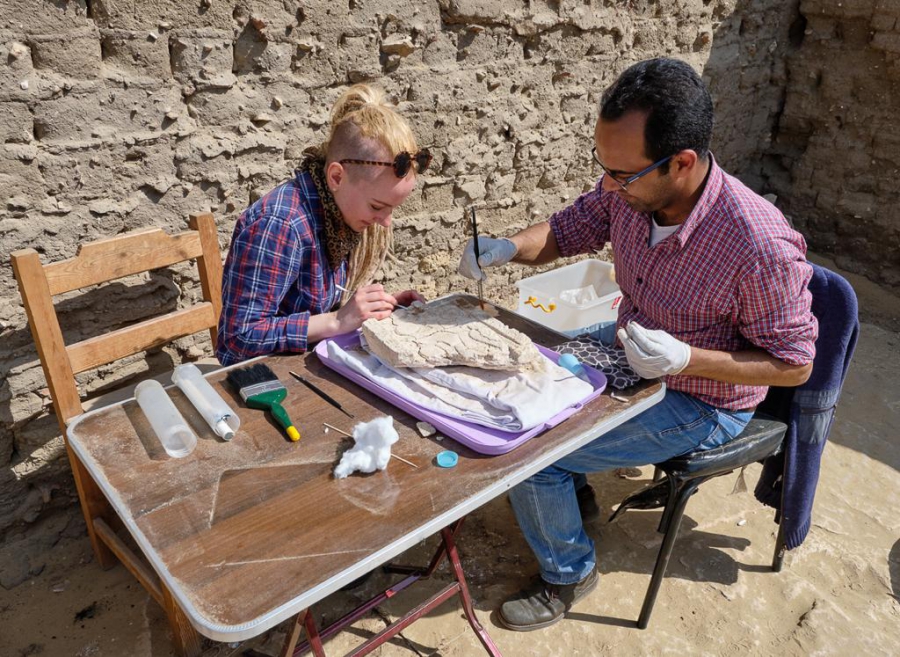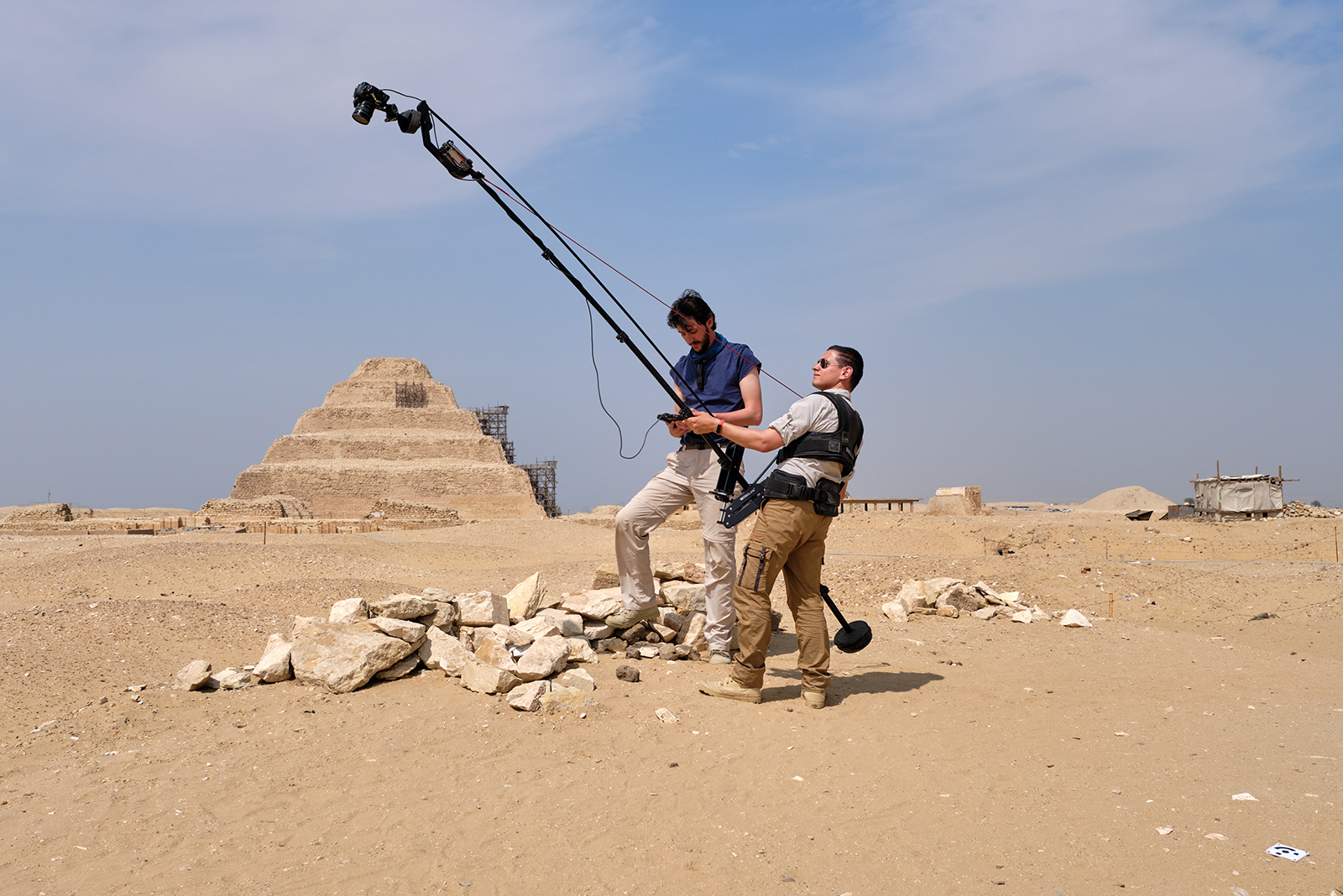In 2018, the Leiden-Turin Expedition to Saqqara agreed with the Egyptian authorities at Saqqara that we should invest more in both the restauration and consolidation of our shared heritage stored at the central Saqqara magazine, as well as of newly excavated material. The plan is to invite at least one conservator specialized on a specific kind of material to the excavation every season. This season we started with a stone conservator, and so we would like to give the word to Stefanie Papenheim in this week’s digging diary to introduce herself and her work.
My name is Stefanie and I arrived in Cairo on the 21st of March to join the Leiden-Turin team, supporting them to preserve the archaeological stone finds of this season.

Stephanie Papenheim and Islam Taha. Photo: Lara Weiss.
I studied conservation and restoration at the University of Applied Science Erfurt (Germany) and I’m specialized in the treatment of stone and wall-paintings. Since 2014, I work at a private restauration company in Weimar with a focus on the conservation and restoration of stone sculptures and historic gypsum busts from museum collections.
I am very happy to be here, as it is in fact not the first time that I had the chance to work on amazing Egyptian artefacts from Saqqara. In 2015, I supported the Leiden Museum to preserve and restore some of their most famous exhibits, for example the limestone tomb statues of Maya and Meryt.
During the first two days on the excavation site I got a first overview of the latest findings, the material and the condition of preservation. Most of the objects in the storage are impressive reliefs made from limestone with fragments of polychrome colour. They show damage typical for limestone such as flaking, powdering, cracking or exogenous and endogenous deposition like firmly adhering crusts from mud, sand and salts.

Working on an offering table found this season. Photo: Nicola Dell’Aquila.
In general these kinds of damage are caused by salinization combined with high changes in temperature and relative air humidity or water infiltration. This means that the main conservation work focuses on the reduction of deposition and structurally damaging salts, and on the stabilization of the limestone by consolidating it. All surfaces have to be cleaned carefully with soft brushes and if necessary with a mixture of water and alcohol. During all interventions it is important to reduce the water input to a minimum to avoid the solution and transportation of salts. In some cases a salt reduction with a desalination compress is necessary. Scalings and cracks have to be glued and backfilled. Surface completions of scalings and cracks have to be applied to stabilize the fine and skilfully carved relief. The fragile and flaking fragments of colour on the polished relief surfaces of course require a lot of patience and a very sensitive treatment to fix them.

Our office in the tomb of Maya. Photo: Nicola Dell’Aquila.
In my work, I am supported by Islam Taha, conservator in the Ministry of Antiquities and student of Architecture Preservation and Rehabilitation of Heritage Buildings at Cairo University. We enjoy the team work and it’s very nice to exchange our experiences. We are very much looking forward to working together on various sculptures and reliefs on the excavation site and in the magazines in the upcoming two weeks. We are happy to help preserving them for the future!
Stefanie Papenheim








